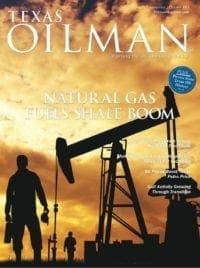The United States is now the hub for natural gas exploration. A shale play touches nearly every corner of our country. More prominent shale plays are in the news with frequency such as the Marcellus of the northeast and the Haynesville Shale of Northwest Louisiana. The Haynesville Shale, from 2008-2010, brought about an economic impact of $40 billion to the state of Louisiana alone. Over the same time period, the Haynesville brought nearly 100,000 direct and indirect jobs. The oil and natural gas industry has contributed over $1.3 billion in local and state tax revenue. During the fiscal year 2011-2012, mineral income – severance taxes, bonuses, and royalty payments – accounted for 14 percent of income deposited in the state general fund.
But how can Louisiana and the United States benefit from this mass amount of natural gas, beyond new jobs? How can we put this fuel to good use? In addition to a manufacturing renaissance resulting across our state and country due to this abundant and cheap natural gas, the automotive industry is now being greatly impacted and transformed. Transforming this dry natural gas that is found in the Haynesville Shale into a compressed natural gas is the wave of the future for the automotive industry. Compressed natural gas (CNG) is clean, cheap, abundant and most importantly, U.S. produced. CNG is more than half the price by the gallon than standard gasoline. If a vehicle takes 20 gallons of gasoline at $3.25, the total cost will be $65 to the consumer. For the same amount of CNG, the cost would be around $29 or $1.45 for a gas gallon equivalent of CNG. The finances simply make sense.
Currently, over 500 CNG stations are in the United States. Louisiana has over a dozen stations at the moment, with several more in the works. You will soon be able to travel from Shreveport to New Orleans, up to Monroe, and back to Shreveport with CNG infrastructure all along the way. Auto manufacturers such as Chevy, Dodge, Ford, and Honda are constantly releasing CNG compatible vehicles. Also, these aforementioned brands, as well as larger commercial grade brands, are releasing numerous types of CNG trucks, heavy equipment and even CNG engines to power drilling rigs. Across the nation, incentives on the state and federal level exist to help with the cost of CNG conversion for vehicles that are not manufactured to be originally CNG powered.
Who is using CNG now? Brand names such as Frito Lay and Pepsi, municipalities such as Baton Rouge and Lafayette, and individuals across the world are now converting to CNG powered vehicles. The United States is actually not even in the top five in the world for the number of vehicles powered by CNG.
Does CNG make sense for you and your company? The economics are completely sensible. The availability is beyond a 100-year supply just in the United States. And lastly, using U.S. produced CNG will discourage our country’s dependence on foreign resources – this alone can strengthen our country’s national security. If there is a true downside to CNG use for vehicles, it has not been made known.
See more at http://loga.la/cng-automotive-fuel-of-the-future/#sthash.Z8PNbY7u.dpuf
Don Briggs is the President of the Louisiana Oil and Gas Association. The Louisiana Oil & Gas Association (known before 2006 as LIOGA) was organized in 1992 to represent the Independent and service sectors of the oil and gas industry in Louisiana; this representation includes exploration, production and oilfield services. Our primary goal is to provide our industry with a working environment that will enhance the industry. LOGA services its membership by creating incentives for Louisiana’s oil & gas industry, warding off tax increases, changing existing burdensome regulations, and educating the public and government of the importance of the oil and gas industry in the state of Louisiana.







